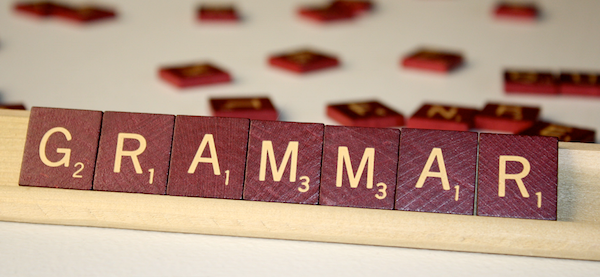The Top 4 SAT Reading Strategies You Must Use
Author
Hartwell
Date Published

If you find the Reading section of the SAT to be challenging, you may be curious about how to prepare effectively. In this article, I’ve compiled our top strategies to boost your confidence and enhance your scores.
SAT Reading Strategy #1: Practice Eliminating Incorrect Answers
The core strategy for the SAT Reading section is that each question has one entirely correct answer, which you can identify by eliminating the other three based on evidence from the passage. While this sounds straightforward, it's crucial to practice eliminating answers through sample questions before the actual test.
Pay attention to the details! Even for questions that don’t directly ask for specific facts from the passage, you can still locate supporting evidence for your answer. Discard any answer choice that does not align with the information given in the passage. Sometimes, you may need to look beyond the specific lines mentioned in the question for broader context.
It’s also beneficial to paraphrase questions in your own words first if they appear confusing. This approach will give you a clearer idea of what the answer should be, reducing the likelihood of being misled by options that seem plausible but lack direct support from the text. Many students fall into the trap of answer choices that plausibly interpret the information but aren't backed by concrete evidence. Don’t find yourself in that situation!
SAT Reading Strategy #2: Develop a Passage Reading Method
Before taking the SAT, it’s essential to establish how you will approach reading the passages to avoid panic or time trouble during the actual test. There are several ways to read passages, and you should try each method during timed practice tests to determine which suits you best.
Method #1: Skim the Passage Initially
This approach is effective for many, as it allows you to grasp the main ideas of the passage before tackling the questions, all while managing your time efficiently.
To skim a lengthy passage, read the introductory and concluding paragraphs, then look at the first and last sentences of each body paragraph. This technique helps you understand the author's main arguments and enables you to answer overarching questions about the passage. If you need to revisit specific sections later for details, you can do so on a question-by-question basis.
Method #2: Go Straight to the Questions
This method may seem daunting, but it can be quite effective since the SAT provides line numbers for most Reading questions. You can tackle questions concerning details and vocabulary first. Sometimes, the relevant information isn't in the lines specified in the question, so don’t hesitate to seek context beyond those lines.
After answering a few detail questions, you’ll likely have a solid grasp of the author's main argument, allowing you to tackle broader and inferential questions. If you still find confusion, you can always revert to the skimming technique outlined in Method #1 for clarification.
Method #3: Read the Passage Thoroughly
Many instinctively adopt this method because it's what they've learned in school. While it may work well for you, be cautious and verify that you’re not spending excessive time reading carefully.
Some individuals read rapidly under pressure but fail to retain information. Ensure that you can read both quickly and comprehensively before choosing to use this method.

Bonus Strategy #2.5: Answer Questions in a Logical Sequence Using Your Reading Method
Once you identify the method that works best for you, use it to guide the order in which you address questions on the Reading section. If you skim the passage (Method #1) or read through thoroughly (Method #3), prioritize answering the big picture questions while the main ideas are still fresh in your mind. Conversely, if you opt for Method #2 and head directly to the questions, start with the detail questions first.
SAT Reading Strategy #3: Analyze Your Mistakes
To improve your scores on practice tests, it’s essential to take the time to understand your mistakes. Merely dismissing an error by saying, “I just made a dumb mistake,” won’t help you learn or grow. Instead, get specific about what went wrong so you can address the issue for future tests. Here are the various types of mistakes you might encounter in the Reading section and how to tackle them:
Types of Mistakes
Type 1: Time Pressure
Did you find yourself running out of time before answering a question or providing a rushed, incorrect answer? Identify the reasons for your time constraints. You may need to adjust your passage reading strategy or practice with more timed tests to become familiar with the format.
Type 2: Misunderstanding the Question
Ensure you fully grasp what the question is asking before taking action. If you often find SAT questions confusing, try rephrasing them in your own words before seeking an answer. Be cautious of the SAT's tricky wording.
Type 3: Content Weakness
If your errors stem from unfamiliarity with the material, you’ll need to dedicate extra time to studying. Although content weakness is typically less of an issue for the Reading section, enhancing your reading comprehension skills can be achieved by engaging with more challenging texts in your daily life.
Type 4: Carelessness

Did you overlook an important word such as “EXCEPT” in the question? Did you rush through and fail to read closely enough? Remind yourself to read carefully, paying special attention to words like “least” and “except.” Experiment with different strategies to alleviate time pressure and avoid rushing.
While taking practice tests, mark any question you find uncertain (even if you end up answering correctly) and review it later to understand why it confused you. This practice is incredibly beneficial, as it forces you to confront the elements causing you to lose points. By the time you reach the actual test, you’ll be well-prepared for questions that may have previously stumped you.
SAT Reading Strategy #4: Identify Your Problematic Questions and Practice Them
This strategy goes hand in hand with understanding your mistakes. Even if you recognize the nature of your errors, you can't correct them until you actively engage with practice questions that challenge you in those specific areas.
If time management is an issue, consider taking more timed practice tests to acclimate to the pressure. If you struggle with particular question types or content areas, focus on those specific types repeatedly until you can answer them confidently.
This means you shouldn’t merely buy an SAT review book, read it from cover to cover, and expect improvement. Instead, be clear about your main weaknesses. Each time you miss or feel unsure about a question on a practice test, circle it so you can revisit it later to identify its question type. By tracking the types of questions you frequently miss, you can spot patterns in your mistakes.
Review
To achieve your best score on the SAT Reading section, here are several key strategies to enhance your study efforts:
Strategy #1: Practice eliminating wrong answers.
Strategy #2: Establish an effective passage reading method.
Strategy #3: Ensure you understand your mistakes.
Strategy #4: Identify your specific areas of difficulty and practice them.
By following these strategies, you'll be better equipped to address any issues in the Reading section and ultimately earn an impressive score!
Related Posts

Master the Digital SAT with our comprehensive guide to grammar rules, ensuring you ace the verbal section with confidence.

Unlock your potential with proven strategies for tackling SAT reading passages, enhancing comprehension, and improving your test scores!